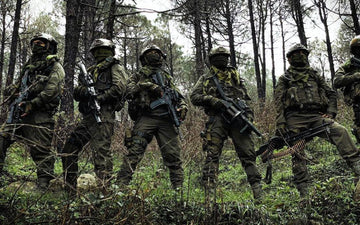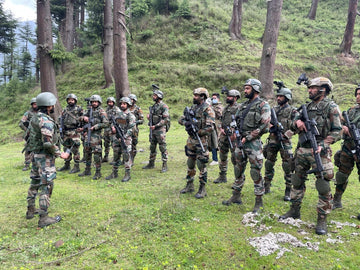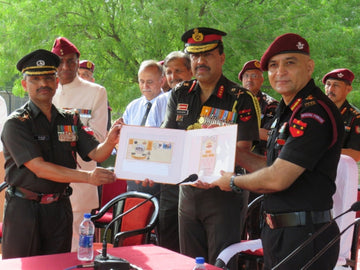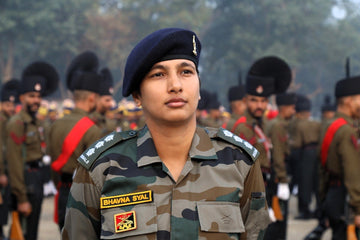In recent years, there has been a significant transformation in the Indian Army's approach to gender inclusion. Among the myriad of opportunities available to women in the military, joining the Women Military Police (WMP) stands out as a unique avenue that combines law enforcement with defense responsibilities. This not only offers women a pathway to serve their nation but also empowers them to take on roles traditionally held by men in the military sphere. For aspiring candidates keen on joining the WMP, understanding the eligibility criteria, application process, and selection methodology is crucial. This comprehensive guide will detail the steps to join the Women Military Police in the Indian Army, covering all essential aspects.
Historical Context
Women have long played an integral role in the Indian Armed Forces, albeit often in limited capacities. The Indian Army began inducting women in non-combat roles in the 1990s, and over the years, the opportunities expanded, culminating in the establishment of the Women Military Police. This initiative marks a significant milestone, recognizing women's capabilities in varied domains of service and enforcing laws while maintaining order within the army's ranks. The WMP not only involves conventional policing duties but also operational support, ensuring that female representation is robust within all levels of the armed forces.
Eligibility Criteria
To successfully join the Women Military Police, candidates must meet specific eligibility criteria, which include age limits, educational qualifications, and physical standards:
Age Limit
Candidates are required to fall within the age bracket of
17½ to 21 years, meaning they should be born between
01 October 2004 and 01 April 2008. For special cases such as widows of defense personnel who passed away while in service, there is a relaxation extending up to
30 years.
Educational Qualifications
The educational benchmark is set at a minimum of
10th pass, where candidates must have achieved at least
45% aggregate marks and
33% in each subject. For Indian Gorkhas, a simple passing of 10th grade is deemed sufficient. Those who are awaiting their results are also eligible to apply, provided they bring their original mark sheets for verification during the recruitment rally.
Physical Standards
Physical fitness is critical for a military role. The prescribed physical standards are outlined as follows:
-
Height: A minimum of 162 cm is required; however, candidates from North-East states, Gorkhas, etc., can benefit from a relaxation of 4 cm.
-
Weight: Must comply with Army medical standards.
-
Chest Expansion: Minimum of 5 cm is mandatory.
It is also worth noting that there are relaxations provided:
2 cm in height and
2 kg or 5 kg in weight for widows of defense personnel and outstanding sportswomen, respectively.
Application Process
Online Application
The application process for joining the Women Military Police is conducted online. The recruitment for the year
2025-2026 opens on
12th March 2025 and will conclude on
25th April 2025. Interested candidates can fill their applications through the
official Indian Army website at
joinindianarmy.nic.in.
Mode of Application
The submission must follow strict online protocols as detailed in the recruitment guidelines of the Indian Army. Failure to comply with the application requirements can result in disqualification, hence careful attention to detail is vital.
Selection Process
The selection process to join the Women Military Police is systematic and comprises several phases, ensuring that the most capable candidates are chosen.
Phase 1: Online Computer-Based Written Examination (CEE)
Initially, candidates must clear a written examination conducted online. This examination assesses:
- General awareness
- Reasoning ability
- Numerical ability
The performance in this examination is paramount, as it determines eligibility for subsequent rounds.
Phase 2: Physical and Medical Testing
Following the written examination, candidates who qualify will be subjected to multiple assessments:
-
Documentation Check: Verification of documented claims against the applicant’s profile.
-
Physical Fitness Test (PFT): A rigorous evaluation that includes activities to test physical stamina and agility.
-
Physical Measurement Test (PMT): Checking height and weight to ensure candidates meet health standards.
-
Adaptability Test: This test evaluates the individual’s ability to function in a military environment, exposing candidates to real-world scenarios they may face.
-
Medical Examination: Candidates undergo a comprehensive health evaluation to confirm they are physically fit for military service.
Recruitment Under Agnipath Scheme
A significant component of the Women Military Police recruitment for 2025-2026 is conducted under the
Agnipath Scheme. Under this scheme, selected candidates will enlist as
Agniveer GD (General Duty), initially serving for a period of
four years. Following this term, up to
25% of Agniveers may have the opportunity to continue service and be integrated into the regular cadre of the Indian Army, subject to the needs of the organization. This innovative approach not only fosters youth engagement in the military but also aligns with modern recruitment strategies focusing on short-term enlistments.
Additional Information
The recruitment is available across all
12 Army Recruiting Zones and the
Indian Recruitment Office (IRO) in Delhi. Candidates are encouraged to consult the official Agnipath Scheme page for additional information regarding pay scales, allowances, leave regulations, Seva Nidhi details, and criteria for regular enlistment.
Real-World Applications and Insights
Joining the Women Military Police offers aspiring female candidates more than just a career in Law Enforcement; it embodies a commitment to serve and protect one's country. Women in the WMP have exemplified resilience, often taking on roles that challenge stereotypes about women in combat and law enforcement.
For instance, many women serving in the WMP have been instrumental in operations requiring both physical prowess and swift decision-making, such as during large-scale events or crises wherein maintaining law and order is critical. These experiences reflect not only the changing dynamics of the Indian Army but also the essential contributions women make in high-stakes environments.
Statistical Data and Research Insights
To underscore the importance of women in the military, consider the following insights:
- As of the latest reports, women account for approximately 3% of the total personnel in the Indian Army, signaling a growing recognition of their capabilities.
- The introduction of the WMP signifies an effort to increase this percentage and encourage more female applicants, thus working towards a more balanced representation.
- Research indicates that diverse teams tend to perform better; hence, fully integrating women into roles such as the WMP could enhance operational efficiency within the military.
Challenges and Solutions
While the opportunity to join the Women Military Police is promising, numerous challenges hinder aspiring candidates from fully realizing their dreams:
-
Societal Barriers: There may still be societal notions that discourage women from pursuing military careers. To counter this, awareness programs and workshops can help reshape perceptions.
-
Physical Demands: The rigorous physical testing may pose challenges for some female candidates. Implementing inclusive training programs that prepare women physically for these tests can alleviate this.
-
Mental Health Support: Navigating a career in the military can be daunting. The establishment of robust mental health resources for women in the military can offer the necessary support for overcoming these hurdles.
Future Trends and Predictions
As society continues to evolve, the role of women in the Indian military, particularly within organizations like the Women Military Police, is expected to expand significantly. Future recruitment initiatives may focus on:
-
Enhanced Training Programs: Specialized fitness and skills training tailored for women.
-
Broader Roles in Combat: As gender inclusion becomes mainstream, women may be given roles in previously male-dominated positions.
-
Global Collaboration: Opportunities for exchanging training and combat techniques with international forces that actively involve women can foster a more progressive environment.
Conclusion
Joining the Women Military Police in the Indian Army presents a unique opportunity for women to serve their nation while helping to reshape the future of gender roles in the military. By adhering to the eligibility criteria, understanding the application process, and preparing for the selection phases, aspiring candidates can position themselves for success. With the steady evolution of women’s roles in the Indian Army and the implementation of the Agnipath Scheme, the prospects for female cadets are not just promising; they are transformative. So, if you aim to develop a distinguished career in law enforcement within the military and contribute to national security, gear up, prepare, and seize the opportunity to apply!





